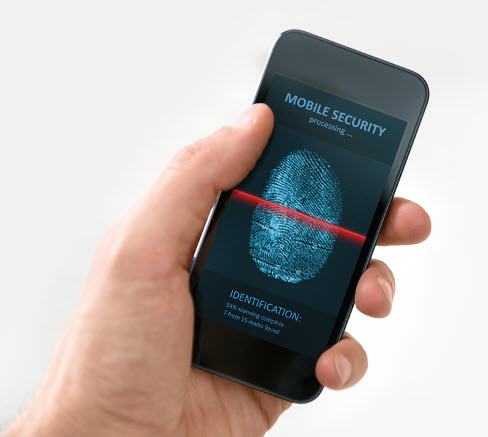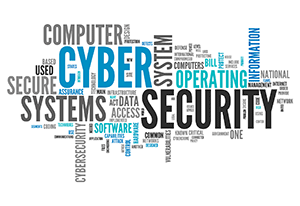Biometrics have succeeded in making mobile commerce more secure
Biometric technology is expected to have a major impact on the mobile payments space. A new report from Goode Intelligence has noted that this technology has helped making mobile commerce much more secure than it had been in the past. This technology involves the use of biological information, such as a fingerprint, to protect a mobile device. Many of the latest smartphones that have been released this year incorporate biometric technology in some way, especially those that have mobile payments capabilities.
Report predicts that biometrics will secure $5.6 trillion in mobile payments by 2020
According to the report from Goode Intelligence, biomteircs may be responsible for securing more than $5.6 trillion in mobile payments by 2020. This technology will be used to authorize some 226 billion transactions, with each transaction coming in at $25 on average. Consumers have shown a great deal of interest in mobile commerce, as it represents a more convenient way for them to get their shopping done. One of the problems that consumers have had with mobile payments, however, is a lack of security.
Security solutions ensure that consumers will be protected as they make mobile transactions
 Mobile commerce is a very attractive market, especially among malicious groups that would be interested in exploiting the financial information of consumers. Security concerns had kept many consumers away from the mobile commerce space, which has lead several organizations involved therein to look for adequate solutions to this problem. Biometric technology has proven to be the solution that these organizations have been looking for, as the technology has proven to keep consumer information safe in an effective manner.
Mobile commerce is a very attractive market, especially among malicious groups that would be interested in exploiting the financial information of consumers. Security concerns had kept many consumers away from the mobile commerce space, which has lead several organizations involved therein to look for adequate solutions to this problem. Biometric technology has proven to be the solution that these organizations have been looking for, as the technology has proven to keep consumer information safe in an effective manner.
Tokenization and biometric technology are gaining ground among payments firms
Biometrics are not the only way to keep consumer information sector, of course. Tokenization is also becoming quite popular in the mobile payments space. This involves replacing consumer financial information with digital tokens, which are unique for every transaction. Both Visa and MasterCard are using this practice in order to ensure that those participating in mobile payments are adequately protected from malicious groups.
Denny |
September 30, 2015
As a rising number of people use their smartphones to make purchases, cyber criminals will up their efforts, too.
According to the results of a recent survey, most cyber security experts (87 percent) now feel that as mobile payments become more popular over the next 12 months, it will also bring about a rise in the number of associated data breaches.
Equally, 42 percent of surveyed cyber security experts had also already used that transaction method this year.
The survey involved the participation of 900 experts in cyber security. It was conducted by ISACA and it suggested that mobile payments are likely to progress without any real barrier from security concerns. Among the respondents to this survey, only 23 percent said that they felt that smartphone payments were actually a safe way to store personal information. Another 47 percent said that they felt that this type of transaction is entirely unsecure. An additional 30 percent of respondents said that they were unsure as to whether or not the transactions were secure.
Regardless of the risk that is associated with security, it looks as though mobile payments are moving ahead.
 Nearly 89 percent felt that cash remains the most secure way for payments transactions to be completed, today. That said, only 9 percent of the respondents said that this was their preferred method of payment.
Nearly 89 percent felt that cash remains the most secure way for payments transactions to be completed, today. That said, only 9 percent of the respondents said that this was their preferred method of payment.
The ISACA survey participants were asked to provide their opinions with regards to the types of vulnerabilities that could be associated with using smartphones to complete payments transactions. Among them, the mobile security concerns that were identified were:
• WiFi – 26 percent
• Loss or theft of the smartphone – 21 percent
• Shmishing (text message phishing)/phishing – 18 percent
• Weak password protection – 13 percent
• User/human error – 7 percent
The report also indicated that mobile payments based on contactless and NFC technology will be continuing their growth. As a whole, the marketplace for these transactions is predicted by Future Market Insights to be worth $2.8 trillion in five years. The cyber security experts felt that the best way to boost the security of the transactions is to use two authentication methods (66 percent) and to require a short-term authentication code (18 percent).
 Mobile commerce is a very attractive market, especially among malicious groups that would be interested in exploiting the financial information of consumers. Security concerns had kept many consumers away from the mobile commerce space, which has lead several organizations involved therein to look for adequate solutions to this problem. Biometric technology has proven to be the solution that these organizations have been looking for, as the technology has proven to keep consumer information safe in an effective manner.
Mobile commerce is a very attractive market, especially among malicious groups that would be interested in exploiting the financial information of consumers. Security concerns had kept many consumers away from the mobile commerce space, which has lead several organizations involved therein to look for adequate solutions to this problem. Biometric technology has proven to be the solution that these organizations have been looking for, as the technology has proven to keep consumer information safe in an effective manner.
 Nearly 89 percent felt that cash remains the most secure way for payments transactions to be completed, today. That said, only 9 percent of the respondents said that this was their preferred method of payment.
Nearly 89 percent felt that cash remains the most secure way for payments transactions to be completed, today. That said, only 9 percent of the respondents said that this was their preferred method of payment.